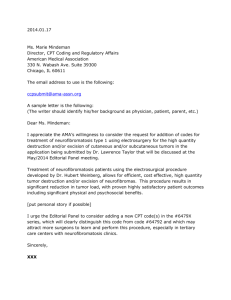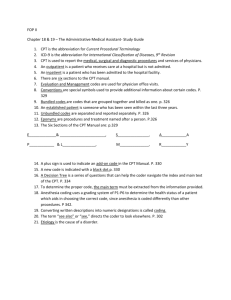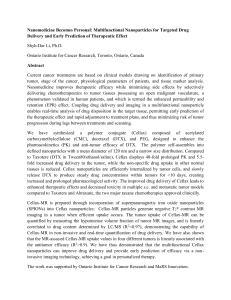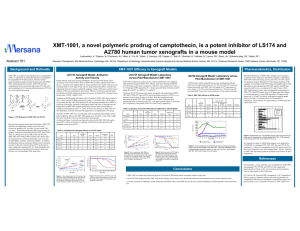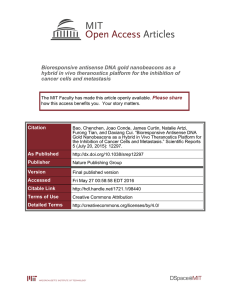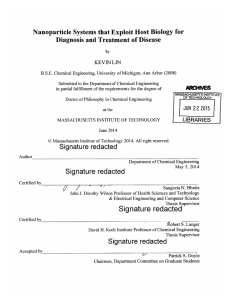Spin polarized transport in semiconductors – Challenges for
advertisement
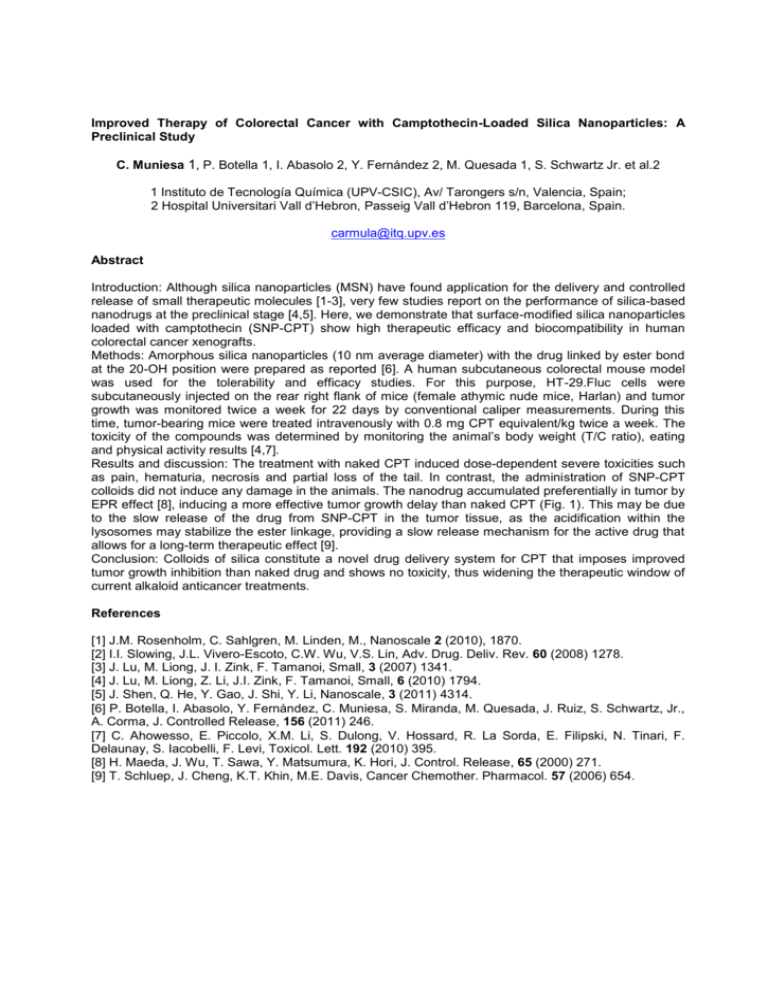
Improved Therapy of Colorectal Cancer with Camptothecin-Loaded Silica Nanoparticles: A Preclinical Study C. Muniesa 1, P. Botella 1, I. Abasolo 2, Y. Fernández 2, M. Quesada 1, S. Schwartz Jr. et al.2 1 Instituto de Tecnología Química (UPV-CSIC), Av/ Tarongers s/n, Valencia, Spain; 2 Hospital Universitari Vall d’Hebron, Passeig Vall d’Hebron 119, Barcelona, Spain. carmula@itq.upv.es Abstract Introduction: Although silica nanoparticles (MSN) have found application for the delivery and controlled release of small therapeutic molecules [1-3], very few studies report on the performance of silica-based nanodrugs at the preclinical stage [4,5]. Here, we demonstrate that surface-modified silica nanoparticles loaded with camptothecin (SNP-CPT) show high therapeutic efficacy and biocompatibility in human colorectal cancer xenografts. Methods: Amorphous silica nanoparticles (10 nm average diameter) with the drug linked by ester bond at the 20-OH position were prepared as reported [6]. A human subcutaneous colorectal mouse model was used for the tolerability and efficacy studies. For this purpose, HT-29.Fluc cells were subcutaneously injected on the rear right flank of mice (female athymic nude mice, Harlan) and tumor growth was monitored twice a week for 22 days by conventional caliper measurements. During this time, tumor-bearing mice were treated intravenously with 0.8 mg CPT equivalent/kg twice a week. The toxicity of the compounds was determined by monitoring the animal’s body weight (T/C ratio), eating and physical activity results [4,7]. Results and discussion: The treatment with naked CPT induced dose-dependent severe toxicities such as pain, hematuria, necrosis and partial loss of the tail. In contrast, the administration of SNP-CPT colloids did not induce any damage in the animals. The nanodrug accumulated preferentially in tumor by EPR effect [8], inducing a more effective tumor growth delay than naked CPT (Fig. 1). This may be due to the slow release of the drug from SNP-CPT in the tumor tissue, as the acidification within the lysosomes may stabilize the ester linkage, providing a slow release mechanism for the active drug that allows for a long-term therapeutic effect [9]. Conclusion: Colloids of silica constitute a novel drug delivery system for CPT that imposes improved tumor growth inhibition than naked drug and shows no toxicity, thus widening the therapeutic window of current alkaloid anticancer treatments. References [1] J.M. Rosenholm, C. Sahlgren, M. Linden, M., Nanoscale 2 (2010), 1870. [2] I.I. Slowing, J.L. Vivero-Escoto, C.W. Wu, V.S. Lin, Adv. Drug. Deliv. Rev. 60 (2008) 1278. [3] J. Lu, M. Liong, J. I. Zink, F. Tamanoi, Small, 3 (2007) 1341. [4] J. Lu, M. Liong, Z. Li, J.I. Zink, F. Tamanoi, Small, 6 (2010) 1794. [5] J. Shen, Q. He, Y. Gao, J. Shi, Y. Li, Nanoscale, 3 (2011) 4314. [6] P. Botella, I. Abasolo, Y. Fernández, C. Muniesa, S. Miranda, M. Quesada, J. Ruiz, S. Schwartz, Jr., A. Corma, J. Controlled Release, 156 (2011) 246. [7] C. Ahowesso, E. Piccolo, X.M. Li, S. Dulong, V. Hossard, R. La Sorda, E. Filipski, N. Tinari, F. Delaunay, S. Iacobelli, F. Levi, Toxicol. Lett. 192 (2010) 395. [8] H. Maeda, J. Wu, T. Sawa, Y. Matsumura, K. Hori, J. Control. Release, 65 (2000) 271. [9] T. Schluep, J. Cheng, K.T. Khin, M.E. Davis, Cancer Chemother. Pharmacol. 57 (2006) 654. Figures a b 1200 PBS CPT SNP-CPT Tumor Volume (mm3) (Mean SEM) SNP-CPT 3.0 2.5 800 2.0 600 1.5 400 1.0 10 9 Intensity BLI (ph/s) 1000 Control 0.5 200 0 1 3 5 7 9 11 13 15 17 19 21 23 Time (days) Fig. 1 a) Growth inhibition curves of the localized subcutaneous HT-29.Fluc colorectal cancer tumors in athymic nude mice treated with CPT or SNP-CPT. For comparison, a control administrated with PBS is also shown. Vertical arrows indicate points of drug injection; b) In vivo evolution of tumor HT-29.Fluc in athymic female mice (day 22 of treatment) by bioluminescence image. Left: the control was administered saline solution. Right: mouse received two injections per week of a SNP-CPT suspension in saline solution, corresponding to a 0.8 mg CPT/kg dose. Significant tumor recession and necrosis in the SNP-CPT treated mouse can be observed.
